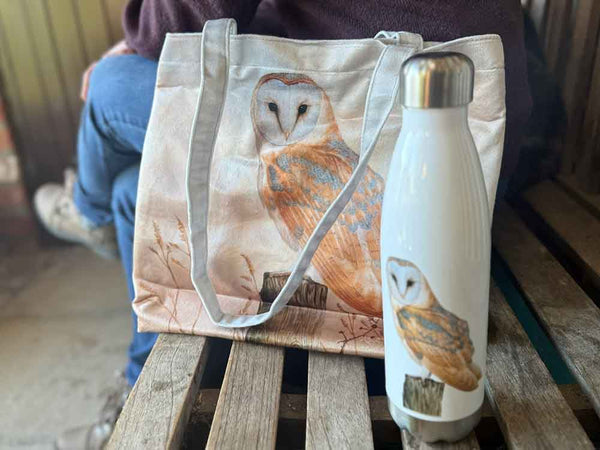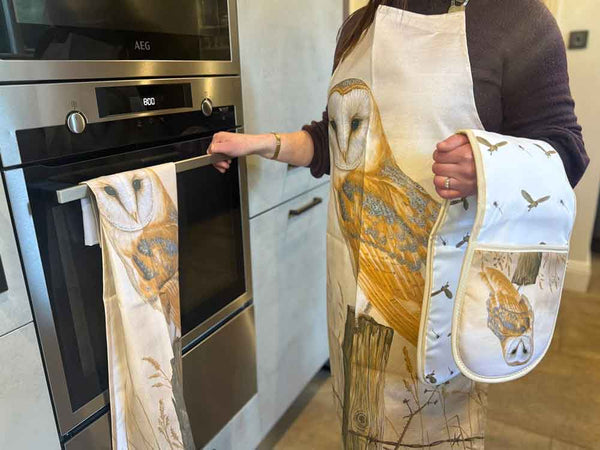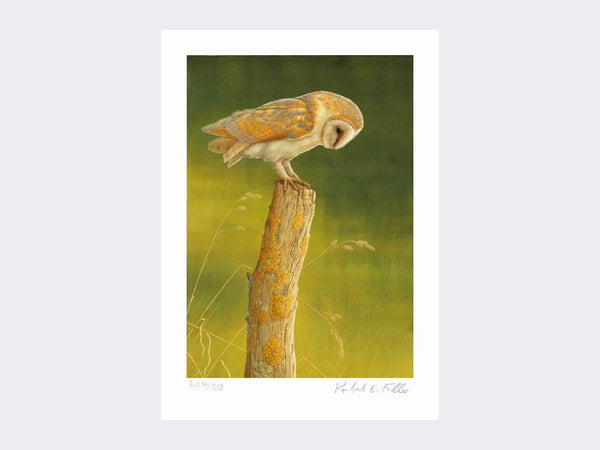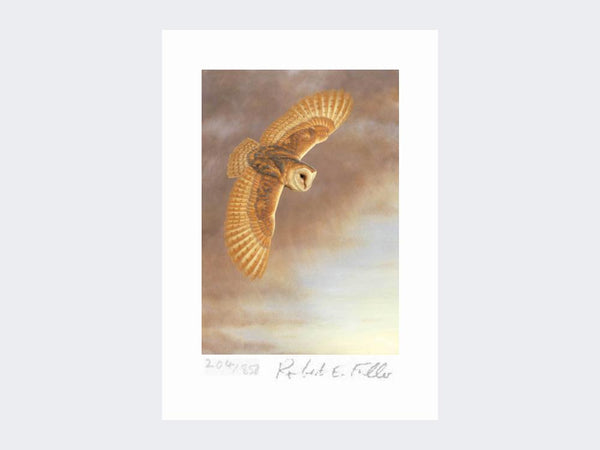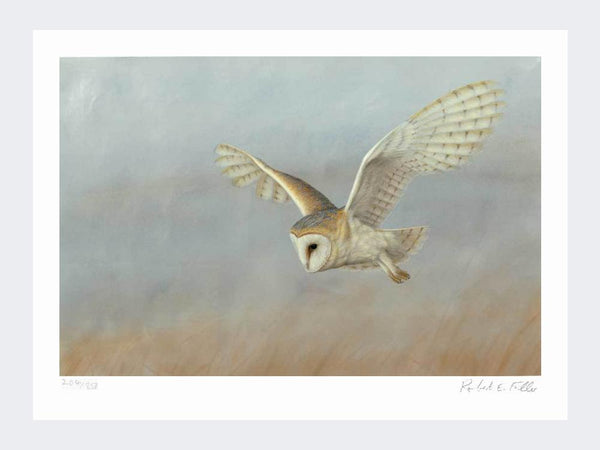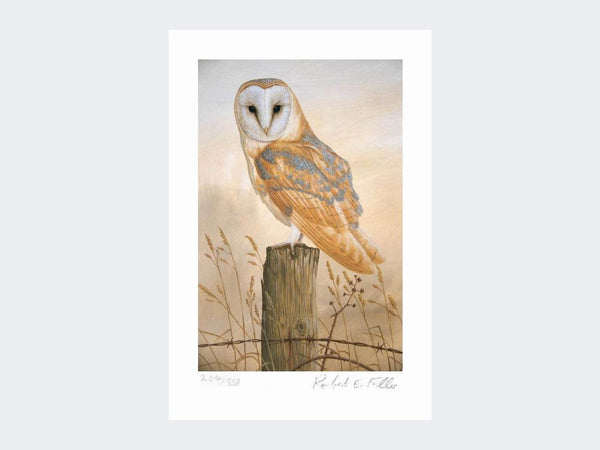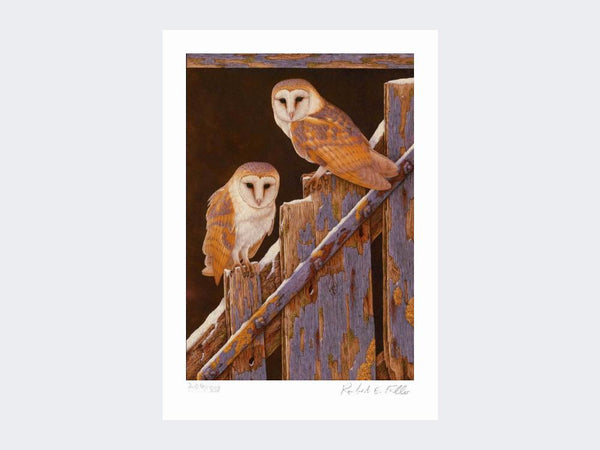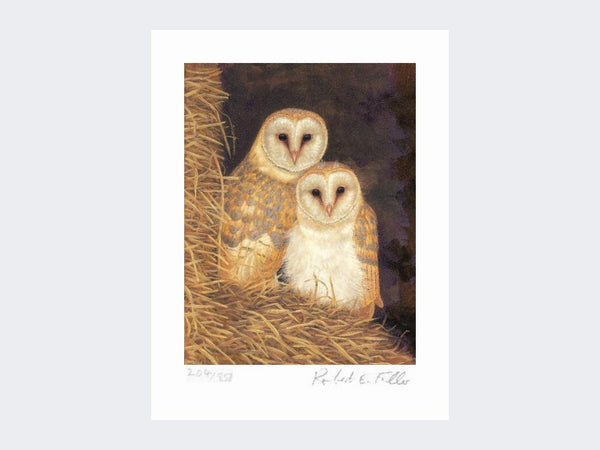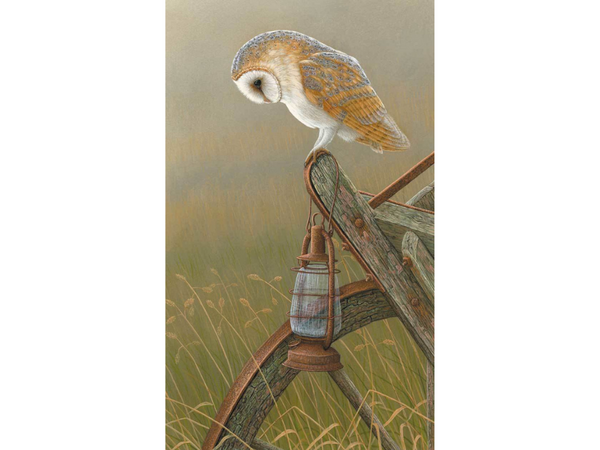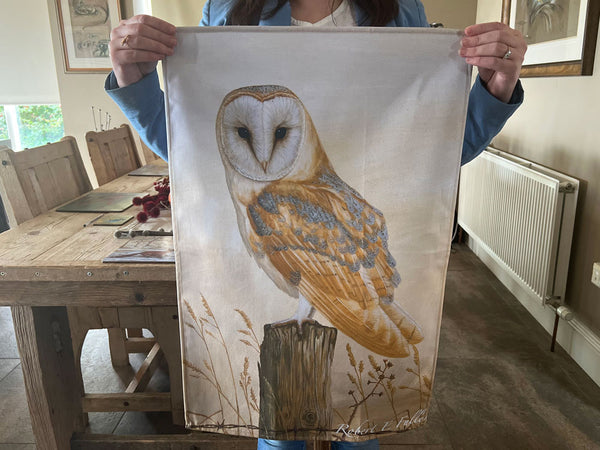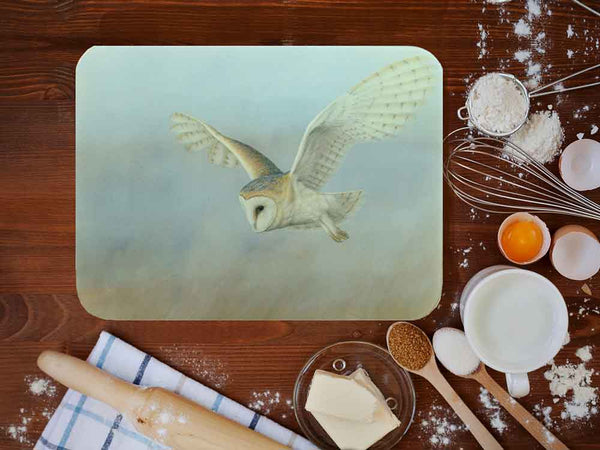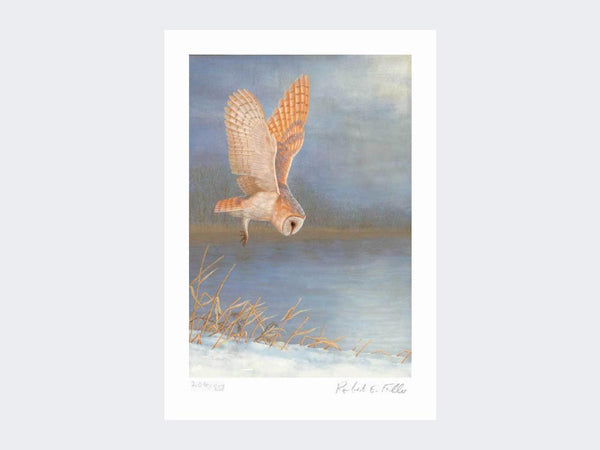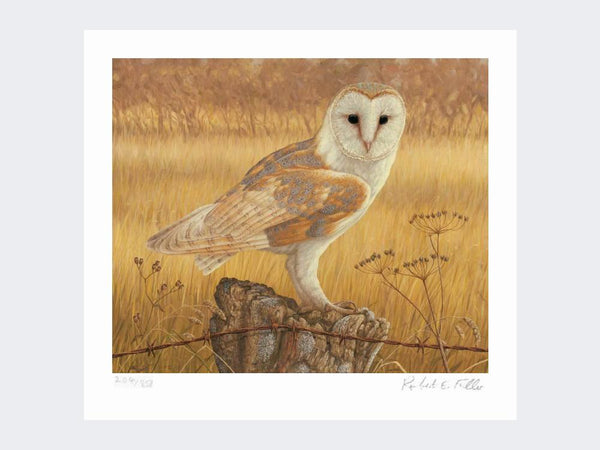Halloween hooters
We have five species of owl living in mainland Britain, but at this time of year you could be forgiven for thinking there is only one. Tawny owls make more noise than the other four species put together during October and November. And all this extra shrieking, hooting and ‘kee-wick’- ing is down to one thing: territory. Young birds are reaching maturity and looking for new homes while older birds are fighting to hold on to their patch. Tawny Owl on the Lookout | Limited Editioni Print | Shop Now
Tawny Owl on the Lookout | Limited Editioni Print | Shop Now
Time to leave home
Ordinarily, adult tawny owls are devoted parents. They spend much of the summer months rearing, feeding and nurturing. This care even continues for weeks after the young have fledged. But in autumn there is a brutal change. The devotion turns to aggression and the adult birds round on their once-beloved young with sudden malice. They shriek at them, fly at them and chase them out of their territory.
A brutal change in behaviour
I have seen one juvenile so badly battered he had cuts from his face to his feet. The beautiful tawny owl model in my painting above was a victim of just such a viscous attack. I was very disappointed when I saw him one day with his eye so badly damaged. And, as if this isn’t enough, the young owls are then pushed from one owl’s domain to another during their search for a place to set up home. Even when these young male owls hoot to try and attract a mate, they end up alerting adult owls to their presence and get short shrift for daring to encroach on established territory.
All about tawny owls
Some time ago, in order to study these secretive birds close up for a picture I was planning for my winter exhibition, I put a nest box up in a line of sycamore trees about 90 yards from my home and gallery in Thixendale, North Yorkshire. The box was taken up almost immediately by a handsome pair. Originally woodland birds, tawny owls have adopted new and more open habitat, often muscling in on the traditional haunts of the barn owl. Tawny owls are extremely versatile hunters, which is why they are so successful. Britain is home to around 100,000 pairs. Their diet largely consists of small mammals like wood mice, but they will eat almost anything they can catch. Birds, frogs, fish, worms, large insects and small rabbits are all on the menu. They will even scavenge road kill.
Owls at my bird table
I decided to take advantage of this latter habit and began to put mice and road-kill pheasant on my bird table at night. More traditional seed mixes were still available for my common garden birds by day. The ploy proved more successful than I had expected. As well as attracting the tawny owl couple, I have also attracted kestrels and barn owls. These birds of prey now feed just nine metres from my kitchen window, which makes photographing them much easier.
I am used to watching my wildlife subjects cramped in a hide, halfway up a tree, in the freezing cold. But now I can study these birds from the comfort of my kitchen - although my wife used to complain that the house was a bit on the chilly side as I often used to keep the window open most of the night so that I could photograph them. I've since built a hide closer to the table - and even a tunnel to reach the hide so that I can go directly from my living room to the hide without alerting the birds to my presence.
I’ve also put in infrared sensors that beep to announce the arrival of a visitor. And the birds don’t seem to mind a 500w security light that I rigged up with a dimmer switch so that I can see them better at night. Illuminated, it is fascinating to watch the owls interacting with each other. And these days the tawny owls are so used to me I can actually get up quite close.
Barn owls take charge
Unusually, the first year I watched it was the barn owl that seemed to be in charge at my bird table. It’s a much smaller bird and is outnumbered at my bird table two to one. I have seen tawny owls attacking barn owls before. But this Yorkshire Wolds barn owl must be tougher than the lowland birds I have watched. Recently I switched on the light to see the tawny owl pair sharing a post preening one another. This tenderness is something I’d never before witnessed. Normally the female is snatching the male’s food from him even though there is plenty for both of them. Sensibly, he always gives way, although not without an angry hoot and a screech.

Night sounds
My new ‘bird of prey feeding station’ is now a key part of the tawny owls’ territory and they defend it fiercely from others. In fact this bird table is now well established and I’m often woken at this time of year with violent fights on our rooftop. It makes me feel a little sorry for the young interlopers who are only trying to make their own way in life. But I don’t expect they stand a chance against this well-bonded pair. On still, frosty nights, the male’s hoots ring out down the valley and are often answered by neighbouring owls and interrupted by the bark of a fox or the eerie screech of a barn owl. Scroll down to see all my paintings of tawny owls. For more information and prices click on the pictures.

 Three Tawny Owls | Limited Edition Print | Shop Now
Three Tawny Owls | Limited Edition Print | Shop Now















